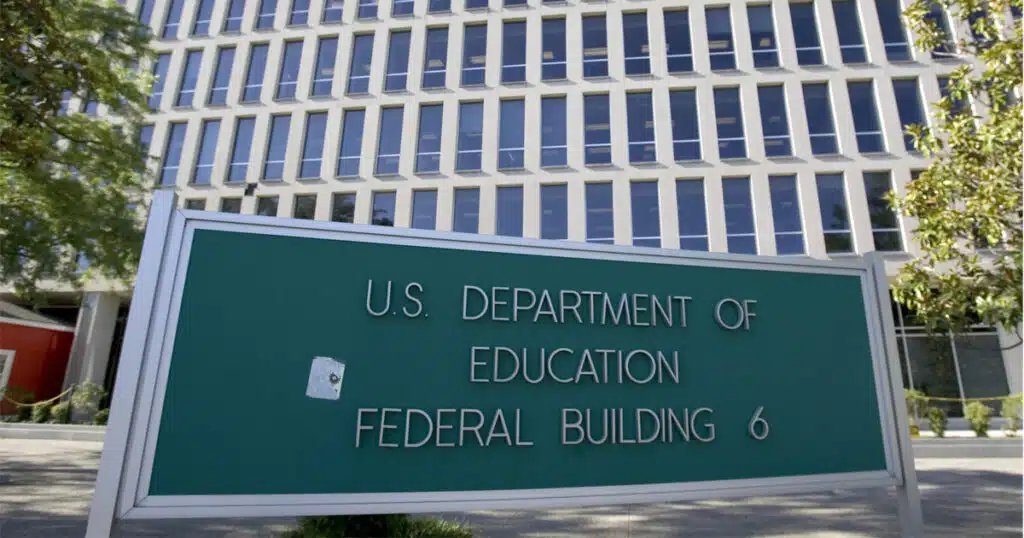
Secretary McMahon Restores Accountability on Defaulted Student Loans Biden Ignored
As part of her efforts to overhaul the federal education system, Education Secretary Linda McMahon is restoring accountability to the federal student loan system. Beginning May 5, the Department of Education will resume involuntary collections on defaulted federal student loans, ensuring that borrowers honor their commitments and taxpayers aren’t left footing the bill.
Since March 2020, the department has halted collections on defaulted student loans, declaring a pandemic-related pause. As part of the Fiscal Responsibility Act of 2023, borrowers were supposed to resume payments in October 2023. Yet, the Biden administration extended a 12-month “on-ramp” period that lasted until September 2024, shielding delinquent borrowers from collections, wage garnishments, or tax refund offsets, even as many remained in default.
Simultaneously, the Biden administration introduced its unlawful and unjust income-driven repayment plan–Saving on a Valuable Education. This plan allowed borrowers to pay next to nothing in monthly payments and see their loans canceled after 10 years, depending on their circumstances.
Unsurprisingly, courts quickly intervened, freezing the program and plunging millions of borrowers into administrative forbearance. As a result, no payments were being made on billions of dollars in outstanding loans.
Fast-forward to today. The damage has been substantial. Unsurprisingly, the Education Department has announced that the “student loan portfolio is headed towards a fiscal cliff,” and less than 40% of borrowers are actively repaying their student loans. A staggering 5 million borrowers had already defaulted on their loans before the pandemic pause even began.
The previous administration’s policies created a dangerous moral hazard, conditioning borrowers to expect taxpayer-funded bailouts while disregarding the promises they made.
The department’s course correction couldn’t be more timely. Over the next two weeks, defaulted borrowers will be notified to either make a monthly payment, enroll in an income-driven repayment plan, or sign up for loan rehabilitation. Later this summer, the government will start collecting what is due by withholding money from borrowers’ tax refunds, federal pensions, and even wages if the borrower is unable to make payments.
To assist borrowers through this transition, the Education Department has also implemented systems to ensure they don’t feel left in the dark when figuring out what they owe and how to make payments. They have extended the Federal Student Aid office call-center hours to weekends, launched a new AI assistant, and updated the loan simulator so borrowers can identify the best financial strategy moving forward.
As much as the Biden administration tried to make student loan debt disappear with the stroke of a pen, the debt never truly goes away. It merely shifts the burden onto American taxpayers, two-thirds of whom either chose not to pursue higher education or already responsibly paid off their loans. The previous administration’s policies ignored this fundamental economic truth.
McMahon also recognizes that runaway college tuition is a major driver of the crisis. Tuition has risen at twice the rate of inflation, while many degree-granting programs offer little return in the job market. As she recently wrote in The Wall Street Journal, “Accountability is a two-way street.”
A necessary next step would be to rein in federal intervention in the student loan market. The federal government currently originates 90% of all student loans, crowding out private lenders and distorting prices. This easy, unrestricted access to federal student aid has contributed to rising college costs.
Reforms like the College Cost Reduction Act, introduced last Congress by Rep. Virginia Foxx (R-NC), former chair of the House Education and Workforce Committee, would prohibit the adoption of new regulations that increase costs for the student loan program, eliminate the PLUS loan program that allows parents and graduates to borrow up to the cost of attendance, among other things, and encourages a higher education system that promotes affordability, innovation, and better outcomes for students and taxpayers alike.



